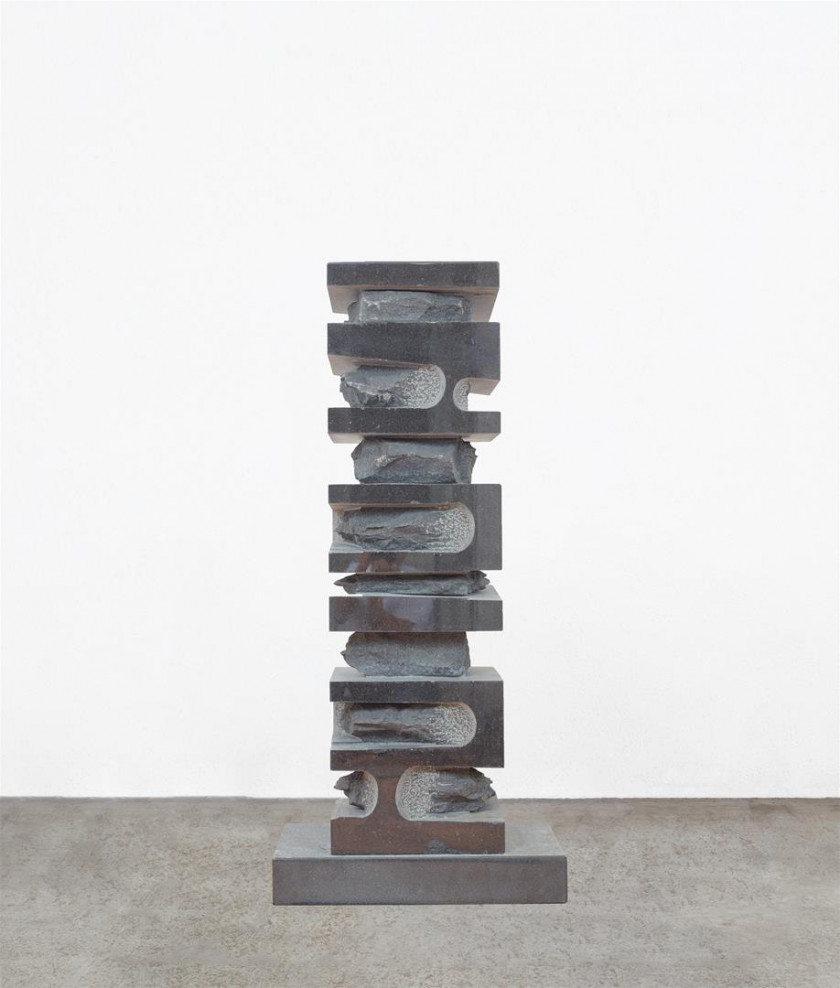Sem título [Untitled]
sculpture


anos 90
Black granite from Angola
130 x 40 x 60 cm
This relatively small-scale sculpture, by the Japanese artist Minoru Niizuma, is a square black granite pillar composed of horizontal sections alternating two different and contrasting textures and finishes. Brut and seemingly unfinished areas, resembling natural rocks, are sitting further back in perfectly defined carved niches formed by straight and polished geometrical yet irregular sections. The polished layers form interconnected tridimensional laid flat arch shape modules. The sculpture reposes on a plane base granite tile and is topped with an ending granite plateau. Its structure presents balance and regularity in the succession of the different layers. It juxtaposes the clean round lines, the parallels and the sharp right angles of the masterly carved arches with the irregular angles and wavy lines of the rough and bumpy areas. The square shape of the pillar traditionally conveys ideas of solidity and stability.
The artist is known for intermingling influences from archaic artistic expressions linked with ritualistic celebrations of nature and earth, from traditional asian arts and crafts and from the Western modernism and avant-garde. He created archetypal forms and abstract motives such as pyramids, cubes, eggs, arches, spirals, concentric squares and waves. For its repetitive and modular pillar structure, the sculpture may evoke, in a Brancusi-like manner, some indigenous totem poles traditionally carved with schematic symbols and abstract shapes. For its juxtaposition of non-finito and finely sculpted sections, it may recall Michelangelo’s Slaves series marbles or Rodin’s bronzes which combine the brute and imperfect forces of matter with the elegant and refined shapes resulting from human imagination and manual work.
Nevertheless, the removal of figurative representation, of narrative, metaphor and emotional contents identifies Niizuma with the European and American Abstraction Minimalist movements. Indeed, not only does the focus go primarily to spatiality and physicality, but it also goes to the visual, tactile and essential dimensions of sculptural art.
Katherine Sirois